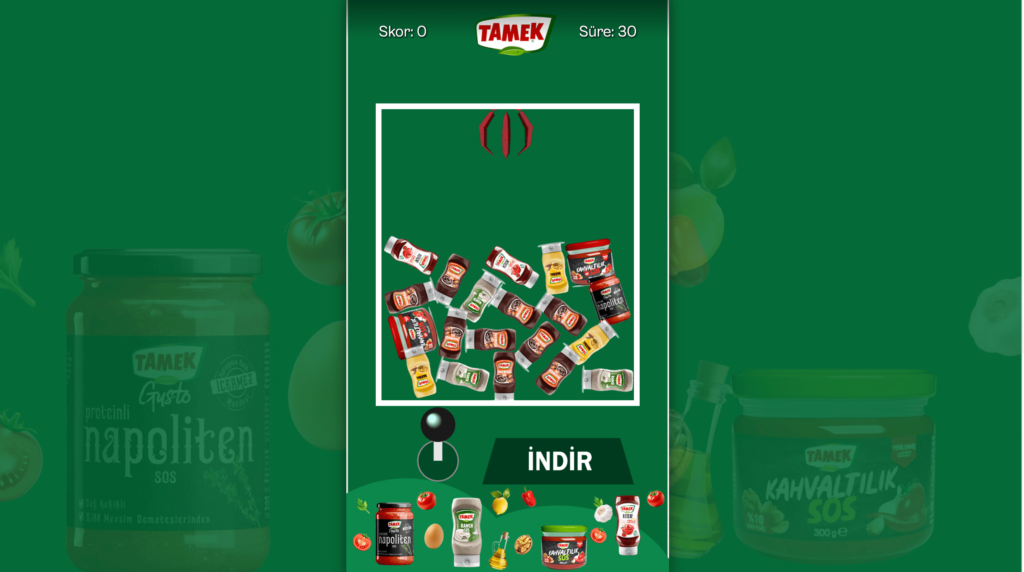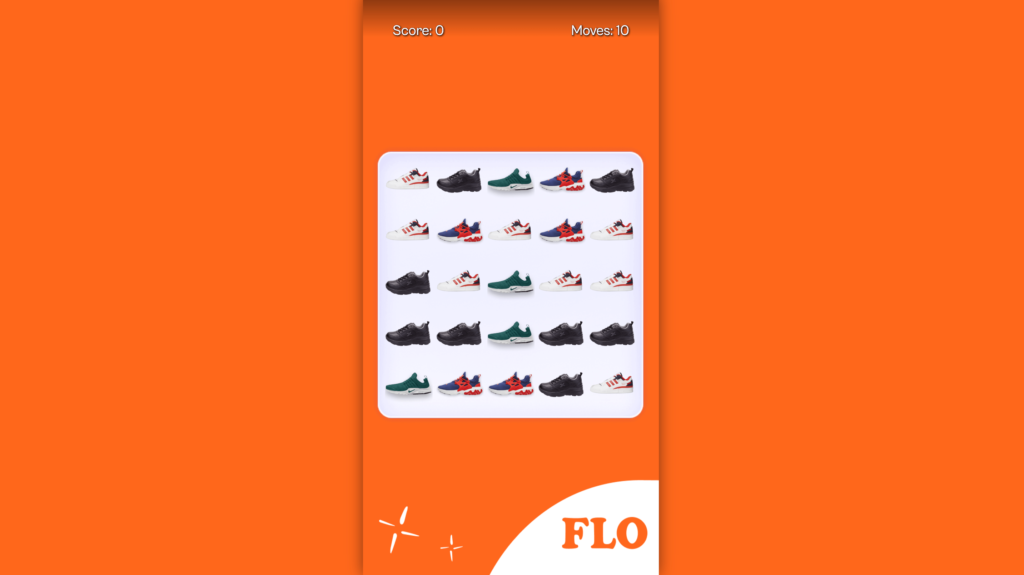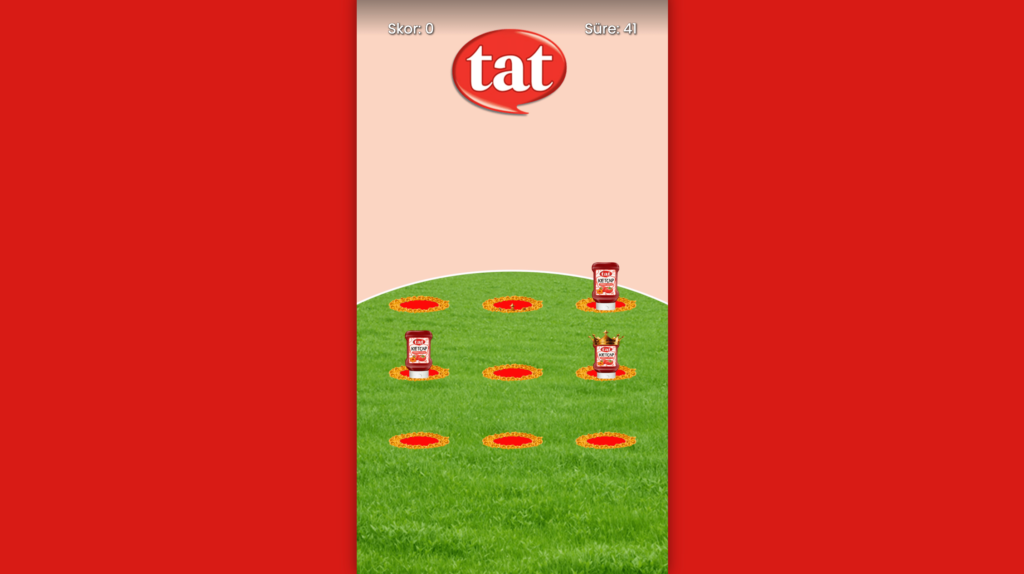Summary: Retail gamification games can boost sales by 10-120% while collecting valuable first-party data. This article explores 4 proven game mechanics: falling objects collection, virtual shopping baskets, memory matching, and whack-a-mole games, with real examples from food, fashion, and FMCG brands.
Table of Contents
- Why Gamification Works in Retail
- 4 Powerful Game Ideas Transforming Retail
- Strategic Benefits of Retail Gamification
- Implementation Strategies
- Real-World Success Stories
- Getting Started with Playzo
- Frequently Asked Questions
The retail landscape is evolving rapidly. With 98% of website visitors leaving without converting and traditional marketing methods struggling to capture attention, forward-thinking retailers are turning to gamification to revolutionize their customer engagement and data collection strategies.
Featured Snippet Answer: The most effective retail gamification games include falling objects collection (for food brands), virtual shopping baskets (for supermarkets), memory matching puzzles (for fashion retailers), and whack-a-mole games (for FMCG brands). These games typically increase engagement by 10x and boost sales conversion rates by 10-120% while collecting valuable first-party customer data.
Why Gamification Works in Retail
Traditional retail marketing faces significant challenges: low engagement rates, intrusive popups that drive customers away, and difficulty collecting valuable first-party data. Gamification solves these problems by creating engaging, interactive experiences that customers actually enjoy.
People Also Ask: How does gamification increase retail sales? Gamification increases retail sales by creating addictive, interactive experiences that keep customers engaged longer, educate them about products, and naturally collect their contact information for follow-up marketing.
The Numbers Don’t Lie
- 90% of Gen Z and Millennials love playing games
- 10x higher engagement with average 2m 49s play time
- 3x higher email & lead data collection
- 10-120% higher sales conversion rates
4 Powerful Game Ideas Transforming Retail
1. Claw Machine Game for Food Brands
Gameplay: Players control a claw mechanism to grab food products from a collection area, just like the beloved arcade claw machine games everyone loves. The claw drops down to pick up products, and players must time their grab perfectly to collect items and score points.
Industry Application: Perfect for food and beverage brands, grocery stores, and restaurant chains. The nostalgic claw machine mechanic taps into universal childhood memories, making it instantly recognizable and engaging for all age groups.
Real Example: A major food brand implemented this claw machine game to promote their sauce products, featuring their entire product line as collectible items inside the claw machine. Players could see all available flavors and varieties while trying to grab them with the claw, creating an addictive and memorable brand experience.
Results: 4-minute average engagement time, 40% lead capture rate, and 22% increase in product awareness among players.
Data Collection Goldmine: The addictive nature of claw machine games keeps players coming back for more attempts, making them more likely to provide contact information to unlock additional plays or exclusive rewards, creating a database of highly engaged customers.

2. Virtual Shopping Basket Game
Gameplay: Players drag and drop products from shelves into a shopping basket, learning about different items while competing for the highest score. This mechanic perfectly mirrors real-life shopping behavior, where you naturally pick up items you love and place them in your shopping cart.
Industry Application: Ideal for supermarkets, convenience stores, and consumer goods brands.
Real Example: A retail chain used this game to familiarize customers with new product launches and seasonal items, featuring their branded products prominently in the virtual shelves.
Results: 60% increase in product recognition, 35% higher click-through rates to product pages, and 25% boost in online sales.
Behavioral Insights: Track which products players select most often to understand customer preferences and optimize inventory planning.

3. Sneaker Matching Puzzle
Gameplay: Players match pairs of sneakers in a grid-based memory game, with limited moves to create urgency and engagement. This is perfect for match card games that help customers learn about product variations.
Industry Application: Excellent for fashion retailers, shoe stores, and athletic brands.
Real Example: A footwear retailer implemented this game featuring their latest sneaker collection, allowing customers to familiarize themselves with different styles and colors.
Results: 3x longer session duration compared to traditional product browsing, 45% increase in product page views, and 18% higher conversion rates.
Brand Education: Players learn about different product variations while having fun, increasing brand knowledge and purchase intent.

4. Whack-a-Mole with Product Integration
Gameplay: Players tap emerging product bottles within a time limit, with special bonus items appearing for higher scores. This classic arcade mechanic works brilliantly with whack-a-mole games for FMCG brands.
Industry Application: Perfect for food brands, beverage companies, and FMCG retailers.
Real Example: A condiment brand used this game to promote their ketchup products, featuring their bottles as the “moles” that players needed to tap.
Results: 2.5x higher engagement than traditional ads, 50% increase in social media shares, and 30% boost in brand recall.
Viral Potential: High scores and achievements encourage social sharing, amplifying brand reach organically.

The Strategic Benefits of Retail Gamification
Why Retailers Choose Gamification
- Seamless Lead Capture: Replace intrusive popups with engaging games that naturally collect customer information
- Product Education: Teach customers about your offerings through interactive experiences
- Brand Differentiation: Stand out in crowded markets with memorable, shareable experiences
- Data-Driven Insights: Understand customer preferences through gameplay behavior
- Cross-Channel Deployment: Use the same games across web, mobile, social media, and in-store
- Cost-Effective Marketing: Higher ROI compared to traditional advertising methods
Implementation Strategies for Maximum Impact
1. Choose the Right Game Type
For Food & Beverage: Product collection games, ingredient matching, or cooking simulations
For Fashion: Outfit builders, style matching games, or trend prediction challenges
For Electronics: Feature comparison games, tech quizzes, or product customization tools
2. Integrate with Your Sales Funnel
Use games at different stages of the customer journey:
- Awareness: Brand-building games that introduce your products
- Consideration: Educational games that highlight product benefits
- Purchase: Reward-based games that drive immediate sales
- Retention: Loyalty games that encourage repeat purchases
3. Leverage First-Party Data Collection
Design games that naturally encourage data sharing:
- Require email for score saving and leaderboards
- Offer exclusive rewards for completing profiles
- Create personalized experiences based on collected preferences
- Use gameplay data to segment customers for targeted marketing
Real-World Success Stories
Fashion Brand Case Study: A major clothing retailer implemented a match-3 style game featuring their seasonal collection. The result? 4-minute average engagement time, 40% lead capture rate, and a 22% sales lift within the first month.
E-commerce Success: An online retailer replaced their popup forms with a product collection game. They collected more qualified leads in one day than they had in the previous week, with 3x higher conversion rates.
Getting Started with Playzo
Playzo makes it incredibly easy to implement these powerful game ideas in your retail strategy. With 50+ game templates, no-code customization, and built-in analytics, you can:
- Choose from proven game templates optimized for retail
- Customize visuals, sounds, and mechanics to match your brand
- Deploy across multiple channels with a single click
- Track detailed analytics on engagement and conversions
- Generate AI-powered content for quizzes and educational games
Ready to Transform Your Retail Strategy?
Join thousands of retailers who are already using gamification to boost sales, collect valuable first-party data, and create memorable customer experiences. Start your Playzo journey today and see why gamification is the future of retail marketing.
Conclusion
The retail industry is at a crossroads. Traditional marketing methods are losing effectiveness, while customer expectations for engaging experiences continue to rise. Gamification offers a powerful solution that addresses both challenges simultaneously.
By implementing strategic game ideas like product collection games, shopping simulations, memory matches, and arcade-style experiences, retailers can:
- Increase engagement by 10x compared to traditional methods
- Collect high-quality first-party data willingly shared by customers
- Boost sales conversion rates by 10-120%
- Create memorable brand experiences that drive loyalty
- Gain valuable insights into customer preferences and behavior
The examples we’ve explored—from food brands using falling object games to fashion retailers implementing memory matches—demonstrate the versatility and effectiveness of gamification across different retail sectors. The key is choosing the right game mechanics that align with your brand, products, and customer journey.
Don’t let your competitors get ahead. The future of retail belongs to brands that can create engaging, interactive experiences that customers love. Start your gamification journey today and transform your retail strategy into a powerful engine for growth, engagement, and data collection.
Ready to get started? Explore Playzo’s game library and discover how easy it is to create powerful retail experiences that drive results.
Frequently Asked Questions
What are the best game types for retail businesses?
The best retail gamification games include falling objects collection for food brands, virtual shopping baskets for supermarkets, memory matching puzzles for fashion retailers, and whack-a-mole games for FMCG brands. Each game type should align with your product category and customer journey stage.
How much can gamification increase retail sales?
Retail gamification can increase sales conversion rates by 10-120%, with average engagement times of 2 minutes 49 seconds. Fashion brands report 22% sales lifts, while e-commerce sites see 3x higher conversion rates compared to traditional popup forms.
What first-party data can retailers collect through games?
Retail games can collect email addresses, product preferences, purchase intent signals, demographic information, and behavioral data. Players willingly share this information to unlock rewards, save scores, or access exclusive content.
Do retail gamification games work on mobile devices?
Yes, modern gamification platforms like Playzo are fully mobile-responsive and optimized for touch interactions. Mobile games often perform better than desktop versions, with higher engagement rates and easier sharing capabilities.
How long does it take to implement retail gamification?
With no-code platforms like Playzo, retailers can implement gamification games in under 24 hours. The platform offers 50+ pre-built templates that can be customized with brand colors, logos, and product images without any coding knowledge.
What’s the ROI of retail gamification compared to traditional marketing?
Retail gamification typically delivers 3x higher lead collection rates and 10x higher engagement compared to traditional marketing methods. The cost per acquisition is often lower due to higher conversion rates and organic sharing potential.